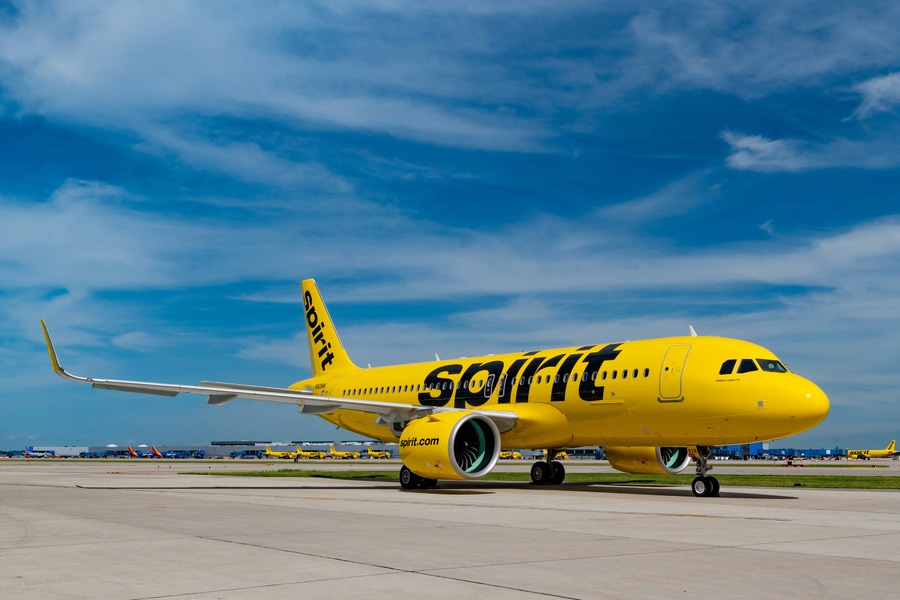Spirit Airlines files Chapter 11 bankruptcy and unveils Project Bravo, a bold transformation to target premium leisure travelers and ensure future profitability.
In a bold move to secure its future, Spirit Airlines announced its Chapter 11 bankruptcy filing, coupled with a comprehensive plan—dubbed Project Bravo—to focus on premium leisure travelers. This transformation aims to counteract challenges posed by post-pandemic shifts in customer behavior and operational headwinds, positioning the airline for sustainable profitability in the coming years.
Industry Shifts and Project Bravo’s Genesis
Spirit Airlines acknowledged the significant shifts in the aviation industry since the pandemic. The rise of premium leisure travel, stagnation in business travel recovery, and inflationary pressures have reshaped customer demand and operating costs. Additionally, supply constraints from aircraft manufacturers and engine suppliers have further limited domestic market capacity.
Spirit Airlines, traditionally a low-cost carrier, faced disproportionate margin pressures compared to value carriers like Alaska Airlines, JetBlue, and Southwest Airlines. The airline emphasized its role as a key player in the low-cost segment, alongside Frontier Airlines and Allegiant Air, serving large US metro areas and Latin American markets.
Building Financial Resilience
The airline has taken decisive actions to strengthen its financial position. These include sale-and-leaseback transactions, deferring Airbus A320neo and A321neo deliveries, negotiating compensation from Pratt & Whitney for grounded aircraft, and continuing asset financing evaluations. As a result, Spirit anticipates improving liquidity by up to $1 billion by year-end.
Focus on Premium Leisure Travel
A centerpiece of Project Bravo is Spirit’s strategic shift toward premium leisure travel. The airline plans to elevate its brand and customer experience while maintaining its cost-competitiveness. Despite modest increases in unit costs (ex-CASM), Spirit expects to offset these through fuel efficiency gains and incremental revenue from its revamped offerings.
Key initiatives include:
- Premium Economy Cabin: Introduction of a new premium cabin with a blocked middle seat.
- Revamped Big Front Seat: Enhanced amenities and exclusive perks for premium passengers.
- Free WiFi: Complimentary internet for premium passengers, with basic browsing available for economy travelers.
- Improved Onboard Experience: Enhanced food, beverage options, and a more customer-centric approach during irregular operations.
- Brand Overhaul: A marketing campaign to reposition Spirit Airlines as a high-value carrier for leisure travelers.
Enhancing Customer Experience
Spirit Airlines is reimagining the passenger journey. The changes include:
- Fee Reduction: Free changes and a significant reduction in ancillary fees across all fare types.
- Loyalty Program Revamp: Allowing customers to redeem points for ancillary purchases and premium upgrades.
- Streamlined Airport Experience: Dedicated check-in lines, priority boarding, and expedited processes at key airports.
- Enhanced Customer Support: Commitment to better handling of disruptions and irregular operations.
These measures are designed to attract higher-spending customers and improve overall satisfaction, positioning Spirit as a compelling choice in the competitive premium leisure market.
Optimized Network Strategy
To align with current market dynamics, Spirit Airlines is overhauling its network strategy. This includes:
- Eliminating Unproductive Markets: Shifting focus to profitable and high-demand routes.
- Capacity Alignment: Adjusting schedules to match peak and off-peak demand.
- Enhanced Partnerships: Pursuing codeshares, joint ventures, and alliances to drive additional revenue.
Revenue Projections and Profitability Goals
Spirit Airlines is optimistic about its ability to return to profitability under Project Bravo. The airline projects a transformation-adjusted TRASM of 10.9 cents, driven by fare increases, improved network alignment, and premium offerings.
By moving from the $50–$150 fare bracket to the $200–$400 range, Spirit aims to tap into upmarket segments willing to pay for enhanced services. The company expects average revenue per passenger to grow from $122 in 2023 to $138 after implementing the plan.
Timeline for Transformation
Spirit Airlines has outlined a clear timeline for its transformation:
- 2023: Launch of new fare products and marketing campaigns.
- 2024: Expected net loss of $915 million as restructuring efforts continue.
- 2025: Introduction of premium economy cabin, in-seat power, and updated cabin features.
- 2026 and Beyond: Sustained profitability, with projected net profits of $223 million in 2027 and $484 million in 2028.
The Path Ahead
Spirit Airlines’ ambitious transformation under Project Bravo demonstrates its commitment to adapting to evolving market conditions. By focusing on premium leisure travel, enhancing customer experience, and optimizing its network, Spirit is positioning itself as a competitive player in the post-pandemic aviation landscape. While challenges remain, the airline’s proactive approach signals a determined effort to secure its long-term viability and profitability.
The post Spirit Airlines Boldly Declares Bankruptcy And Unveils Revolutionary Project Bravo To Dominate Premium Leisure Travel Market appeared first on Travel And Tour World.
Source link
